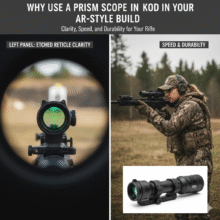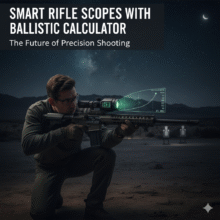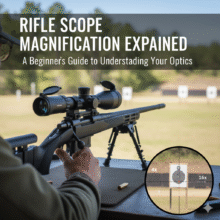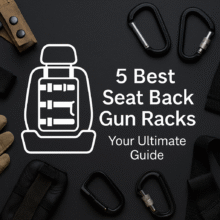Broadhead Comparison: Fixed vs. Mechanical for Big Game
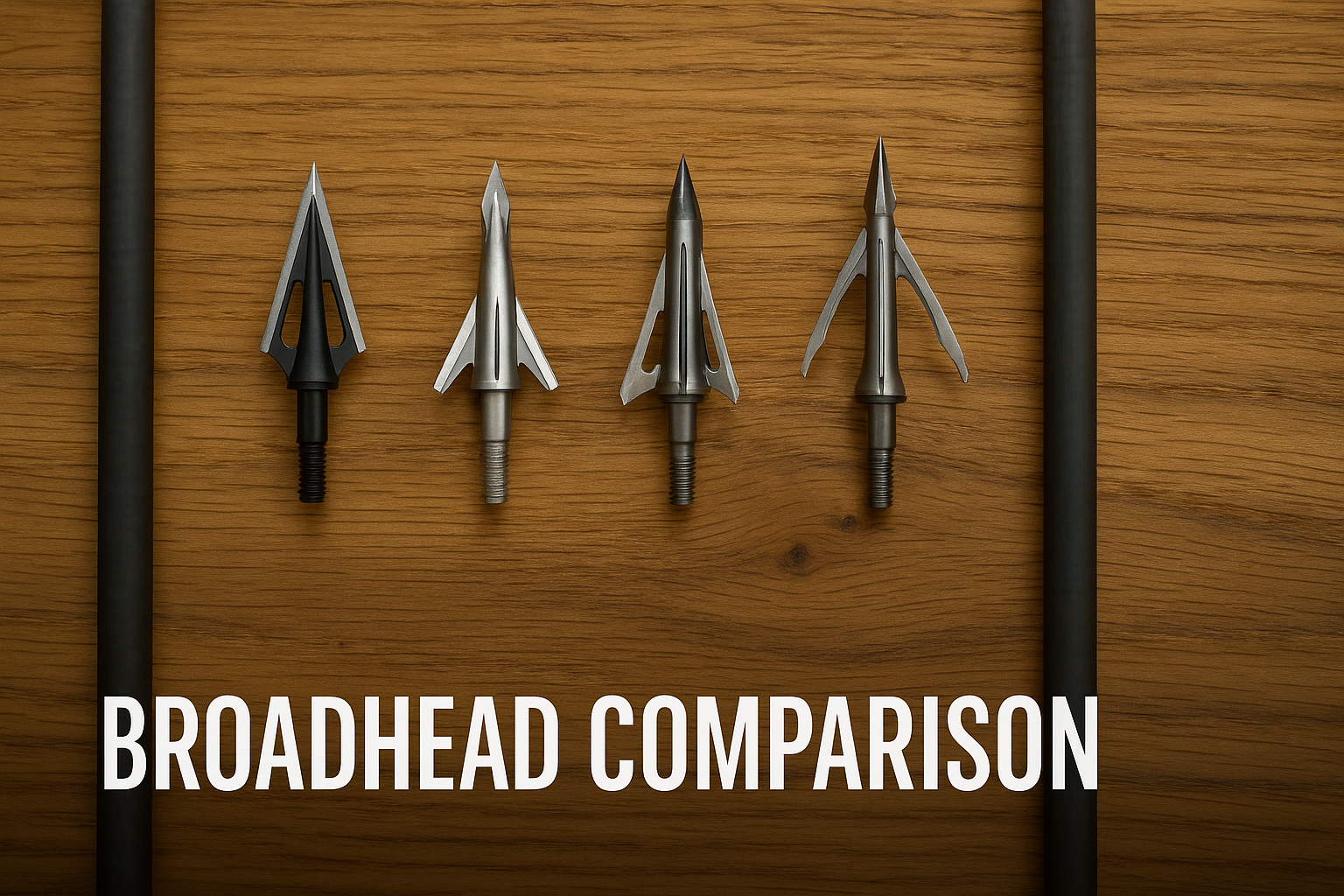
When it comes to bowhunting big game, your broadhead choice can make or break your hunt. While bows, arrows, and sights get plenty of attention, the broadhead is the ultimate point of contact—it’s the tool that penetrates hide, muscle, and bone to create lethal wound channels. Hunters have long debated the pros and cons of fixed-blade broadheads vs. mechanical broadheads, and for good reason. Both have loyal followings, unique advantages, and important trade-offs.
In this in-depth comparison, we’ll break down the strengths, weaknesses, and real-world applications of both styles so you can make the right choice for your big game hunts. Whether you’re pursuing elk, moose, whitetail, or even tougher targets like hogs and bears, understanding how each broadhead type performs will give you a decisive edge in the field.
Table of Contents
- What Are Broadheads? A Quick Primer
- The Case for Fixed-Blade Broadheads
- The Case for Mechanical Broadheads
- Fixed vs. Mechanical: Side-by-Side Comparison
- Broadheads for Different Big Game Animals
- State Regulations on Broadheads
- Choosing the Right Broadhead: Key Considerations
- Best Practices for Broadhead Use
- Popular Broadhead Recommendations
- Final Thoughts: Which Broadhead Wins?
What Are Broadheads? A Quick Primer
Before diving into the debate, let’s establish the basics. A broadhead is the cutting tip of an arrow, specifically designed for hunting. Unlike field points used in practice, broadheads are lethal tools engineered for penetration, tissue damage, and blood loss.
There are two main categories:
- Fixed-Blade Broadheads – Blades are solid, permanent, and do not move.
- Mechanical (Expandable) Broadheads – Blades stay closed during flight and deploy upon impact.
Each has subcategories—vented vs. non-vented fixed blades, rear-deploying vs. over-the-top mechanicals but the core debate centers on fixed durability vs. mechanical accuracy and cutting diameter.
The Case for Fixed-Blade Broadheads
1. Durability & Reliability
Fixed-blade broadheads are the workhorses of bowhunting. With no moving parts, there’s almost nothing that can go wrong mechanically. This reliability makes them especially popular among hunters chasing big, tough animals like elk, moose, and bears, where bone penetration and guaranteed function are critical.
- Pros: No risk of blade deployment failure.
- Cons: Requires precise tuning of bow and arrows for consistent flight.
2. Penetration Power
Because fixed blades don’t waste energy on mechanical deployment, nearly 100% of kinetic energy transfers into penetration. For hunters using traditional bows, lower-poundage compounds, or crossbows, fixed broadheads are often the safer bet for deep penetration.
- Excellent for thick-skinned animals.
- Can break through ribs and shoulder bones.
3. Blood Trails
One downside: fixed-blade broadheads often create smaller entry wounds compared to large mechanicals. While they kill effectively, blood trails may be less dramatic, sometimes complicating recovery if the shot placement isn’t perfect.
4. Flight & Accuracy
Here’s the catch—fixed blades are more sensitive to tuning. Because blades are exposed, they can act like “wings” in flight, exaggerating any tuning or form issues. Hunters often need to paper tune, broadhead tune, and practice extensively to ensure field points and fixed blades hit the same spot.
The Case for Mechanical Broadheads
1. Field-Point Accuracy
The biggest advantage of mechanical broadheads is their accuracy. With blades tucked in during flight, mechanicals behave much like field points. This makes them far easier to shoot accurately, especially at longer ranges.
- Minimal wind planing.
- Great for hunters who practice mostly with field points.
2. Massive Cutting Diameter
Mechanical broadheads are known for large wound channels. Many models open to 2 inches or more, creating devastating entry and exit wounds. This leads to:
- Heavy blood trails.
- Faster recoveries in most scenarios.
3. Energy Requirements
Because they expend some energy opening blades, mechanicals require higher draw weights and heavier arrows to achieve full penetration. On light setups, they may fail to exit or even stop short of vital organs if shot placement is poor.
4. Risk of Failure
The downside? Moving parts can fail. Blades may not deploy correctly if clogged by hide, bone, or heavy clothing. While modern designs have improved dramatically, this risk still worries many hunters.
Fixed vs. Mechanical: Side-by-Side Comparison
| Feature | Fixed-Blade Broadheads | Mechanical Broadheads |
|---|---|---|
| Reliability | Extremely reliable; no moving parts | Risk of blade deployment failure |
| Penetration | Excellent, even on bone & thick hide | Good, but some energy lost on deployment |
| Accuracy | Requires tuning; wind-sensitive | Flies like field points; highly accurate |
| Cutting Diameter | Smaller (1–1.25 inches typically) | Large (1.5–2+ inches) |
| Blood Trails | Moderate; depends on shot placement | Heavy, due to larger wound channels |
| Best For | Big, tough animals (elk, moose, bear, hogs) | Medium game (whitetail, mule deer, antelope) |
| Draw Weight Suitability | Works with low to high poundage | Performs best with medium to high poundage |
| Risk Factors | Flight tuning required | Deployment failure possible |
Broadheads for Different Big Game Animals
Whitetail Deer
- Mechanical Advantage: Whitetails are lighter-boned, making penetration less of a concern. The big wound channels of mechanicals help create easy-to-follow blood trails.
- Fixed Option: Hunters in states where mechanicals are banned (e.g., Idaho, Oregon) will rely on fixed heads, which are more than capable with proper tuning.
Elk
- Fixed Advantage: Elk are massive, with heavy shoulder bones. Fixed broadheads deliver superior penetration and reliability in these tough conditions. Many elk hunters consider mechanicals too risky.
Moose
- Fixed Advantage: Even tougher than elk, moose demand maximum penetration. A strong cut-on-contact fixed blade is the safest choice.
Bear
- Mixed Choice: Black bears have thick fat layers that can clog blood trails. Mechanical broadheads may improve blood trails, but fixed heads guarantee penetration if the shot encounters bone.
Wild Hogs
- Fixed Advantage: Hogs are notorious for thick shields over their vitals. Fixed blades punch through consistently, whereas mechanicals sometimes fail to open fully against this armor.
State Regulations on Broadheads
It’s also worth noting that some states and provinces ban mechanical broadheads for big game hunting. Regulations vary widely, so hunters must check their local laws before heading afield. Fixed-blade heads remain universally legal, giving them a regulatory edge.
Choosing the Right Broadhead: Key Considerations
- Draw Weight & Arrow Setup
- Low poundage (<55 lbs): Fixed blades recommended.
- High poundage (>60 lbs): Mechanical broadheads become viable.
- Target Species
- Light game: Mechanicals work well.
- Heavy game: Fixed broadheads preferred.
- Shot Distance
- Close range (<30 yards): Fixed or mechanical both effective.
- Long range (>40 yards): Mechanical broadheads offer better accuracy.
- Hunter Preference
- Do you value accuracy and blood trails? Choose mechanicals.
- Do you prioritize penetration and reliability? Choose fixed blades.
Best Practices for Broadhead Use
- Practice with Broadheads: Always sight-in with the broadheads you’ll hunt with. Even mechanicals can shoot slightly different from field points.
- Check Local Laws: Ensure your choice is legal for your hunting area.
- Match to Game: Don’t use a whitetail-style mechanical on an elk or moose.
- Sharpen or Replace Blades: Dull blades wound but don’t kill quickly. Always hunt with razor-sharp edges.
- Consider Arrow Weight: Heavier arrows increase penetration for both fixed and mechanical heads.
Popular Broadhead Recommendations
Fixed-Blade Broadheads
- Muzzy Trocar – Tough, reliable, field-tested on big game.
- G5 Montec – One-piece design, easy to resharpen.
- Iron Will S Series – Premium choice for maximum penetration and durability.
Mechanical Broadheads
- Rage Hypodermic NC – Known for devastating wound channels.
- NAP Spitfire – Proven accuracy and reliability.
- Sevr 2.0 – Rear-deploying design for consistent penetration.
Final Thoughts: Which Broadhead Wins?
When it comes to the debate of fixed vs. mechanical broadheads for big game hunting, the real answer is not about which one is “better,” but which one is better for your setup and hunting scenario. Fixed-blade broadheads win in reliability, durability, and bone-crushing penetration, making them the go-to choice for hunters targeting elk, moose, hogs, or bears. On the other hand, mechanical broadheads deliver field-point accuracy and devastating wound channels, making them an excellent option for whitetails, mule deer, and other medium-sized game where blood trails and long-range precision matter most.
At the end of the day, your draw weight, arrow speed, target species, and hunting environment should guide your choice. Many experienced hunters keep both styles in their kit, switching depending on the animal they’re pursuing. What matters most is ensuring your broadhead is sharp, your bow is tuned, and your shot placement is ethical.
By understanding the strengths and weaknesses of both types, you’ll be equipped to make the best decision for your next hunt—maximizing accuracy, penetration, and most importantly, achieving quick, ethical kills in the field.


